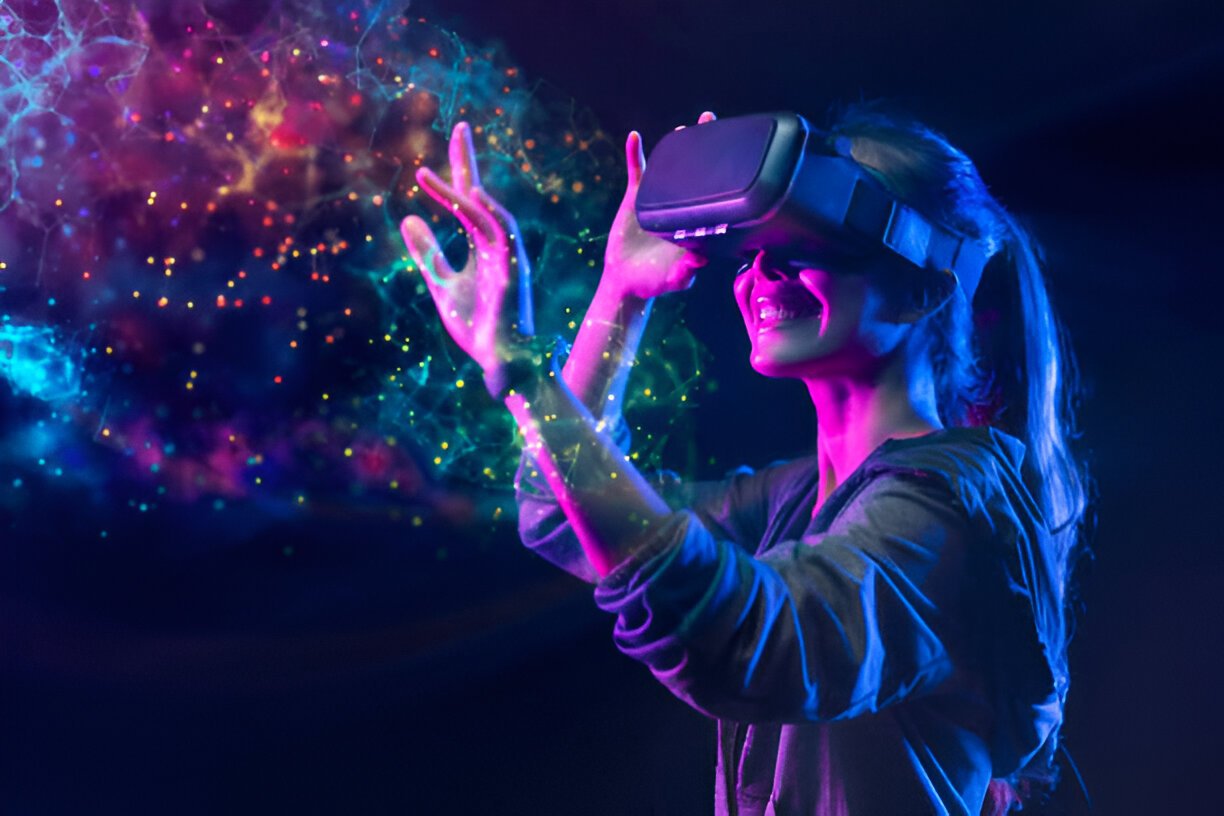Virtual reality (VR) and augmented reality (AR) are quickly emerging as major forces behind innovation in the entertainment sector. The way audiences interact with media, participate in experiences, and consume narratives is being revolutionized by these technologies. AR and VR are influencing a future in which the digital and real worlds coexist together, from immersive games to live performances.
AR and VR’s Impact on Gaming
When it comes to integrating AR and VR into entertainment, gaming is at the forefront. By fusing digital and real-world features, games like Pokemon Go and Angry Birds AR: Isle of Pigs have already shown how augmented reality may improve user engagement. With gadgets like Apple’s Vision Pro and Meta’s Quest 3 at the forefront, virtual reality gaming is likewise becoming more and more popular. These gadgets provide real-time interaction, creative mechanisms, and more engaging social gaming experiences. Additionally, brand-new VR games are appearing that make use of VR’s storytelling and exploration features.
Innovations in Live Events: From Sports to 3D Concerts
With sporting events and music concerts shifting to the digital sphere, AR and VR are also transforming live entertainment. Fans now have new ways to interact with their favorite musicians and teams thanks to virtual reality, which enables them to attend 3D concerts and immersive sporting events. This is especially true with developments like virtual reality platforms that let fans watch live events and performances from the comfort of their homes, just like they would if they were there. These advancements alter the conventional manner in which live events are experienced while simultaneously expanding access.
AR in Retail and Shopping Experiences
Gaming and live events aren’t the only forms of entertainment available. In order to offer engaging shopping experiences, retailers are now utilizing augmented reality technologies. Before making a purchase, consumers can utilize AR applications to preview products, digitally try on clothing, and check how the furniture fits in their houses. Businesses like Google and IKEA have created augmented reality solutions to improve the shopping experience. The boundaries between entertainment, shopping, and interaction are blurred by these apps’ immersive and customized opportunities.
Expanding Applications in Healthcare and Education
AR and VR are expanding into fields other than entertainment, such as healthcare and education. Patients using VR therapies are overcoming mental health issues like PTSD and phobias. In a similar vein, medical training is being conducted using VR-based simulations, which give surgeons and other medical professionals hands-on, risk-free experiences. Virtual reality (VR) is also helping education by facilitating interactive learning experiences that were previously unattainable through conventional means. From medical procedures to engineering instruction, these technologies provide immersive environments for hands-on learning.
Market Growth and Consumer Adoption
The market for AR and VR technologies is expanding more quickly as they get more advanced. The market for AR and VR is expected to grow to $220 billion by 2024, propelled by improvements in consumer accessibility and technology. Users may now enjoy more seamless and captivating augmented reality interactions in their daily lives thanks to the introduction of faster 5G connectivity, which is improving the functioning of AR experiences on mobile devices.
Challenges to Adoption
Despite their exciting potential, AR and VR technologies are still facing technical and social hurdles. Technical limitations, such as affordability and hardware constraints, remain challenges. Moreover, AR and VR must overcome ethical and societal questions related to privacy, data use, and accessibility. Addressing these obstacles is essential to ensure the wide-scale adoption of AR and VR innovations
Spatial Audio and Advanced Haptics to Enhance Immersion
By appealing to more senses, haptic feedback, and spatial audio technologies are improving the immersive AR/VR experience. Dolby Atmos-powered spatial audio and sophisticated haptic feedback are enhancing the realism and naturalness of digital encounters. These technologies are being used by developers to make sure that consumers are immersed in interactive worlds that are not just visually exciting but also tactile and acoustic. These sensory connections have the potential to improve the use, appeal, and impact of VR and AR.
The Future of AR and VR in Daily Life
In the future, AR and VR will be more than specialized technologies. They are starting to play a major role in how individuals use digital information on a regular basis. Wearable AR/VR gadgets, such as Apple’s Vision Pro or Meta’s Quest 3, are expected to become indispensable tools for social engagement, gaming, work, and live entertainment, according to experts. These technologies are anticipated to link people to virtual worlds that include social life, employment, healthcare, and entertainment as they develop further.
Technologies like AR and VR are more than just passing trends; they are revolutionizing the way people interact with digital content. The entertainment sector is about to enter a new era characterized by augmented reality and immersive virtual landscapes as technology develops further and consumer access increases. AR and VR are becoming more than just entertainment tools thanks to industry expansion and technology advancements; they are opening up new avenues for learning, connecting, and exploring the digital frontier.







